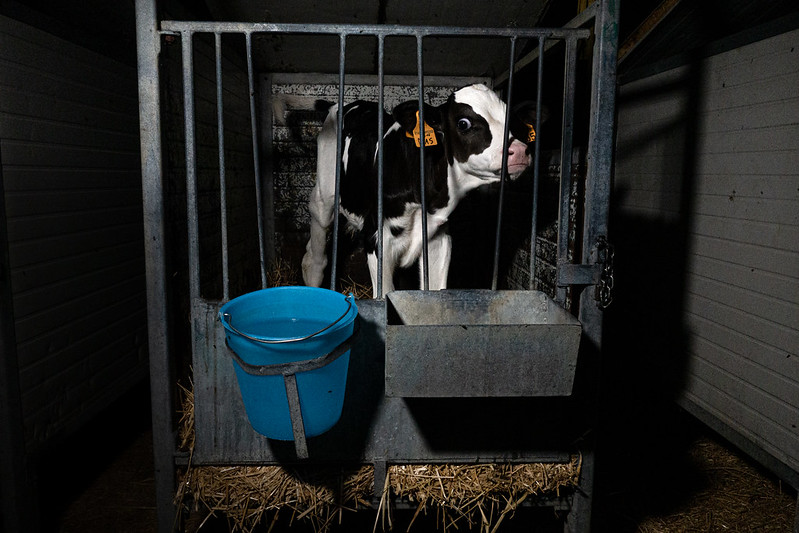This piece is about animals, human and non-human. It is about how, after WWII, Europe, like many other parts of the world, industrialised animal agriculture and heavily subsidised it to ensure food security to its population in extremely difficult times. Almost eighty years later we’re still stuck with this system and with a mentality whereby, even if our own citizens are by now well provided for, there’s always room for exporting animal products obtained in the cheapest way imaginable.
Except that now we know that industrial animal production is cruel, polluting, a hotbed of diseases, a disaster for biodiversity, and that it churns out unhealthy cheap food, which is often wasted. According to some scholars, this whole production model is currently on life support as it could no longer survive without subsidies and if consumer prices reflected the externalised costs. The system is outdated, broken and its remodelling is long overdue.
There are many reasons why we need to completely change our view on industrial animal agriculture, but today I want to talk about the animals, the ghosts in this gigantic machine. I want to reflect upon the way in which we, human animals, managed to remove ourselves from the immense cruelty that happens daily behind the closed doors of industrial animal farms and slaughterhouses.
We do not want to see, we do not want to know. I have lost count of the number of times I’ve heard people say “I prefer not to think about it”, or “I cannot watch those videos, they are horrendous”, or “I do not know how you cope with all that suffering”. Sometimes these things are said while eating a meal in which the animals are neatly served in an unidentifiable way in elaborate dishes. Psychologists call this phenomenon cognitive dissonance, and I think that, for most people, it has become a survival mechanism to keep certain horrors at bay.
Animal protection organisations relentlessly release harrowing investigations showing beyond any reasonable doubt that what the industry likes to call “exceptions” represent, in actual fact, the everyday reality for billions of farmed animals. Many prefer to turn their gaze away. Others have become numb, faced time and again with suffering on such a massive scale. Policy makers do not dare challenge the status quo. After all, there are immense economic interests at play here.
This year is pivotal for farmed animals because the European Commission has the once-in-a-lifetime opportunity to acknowledge reality and improve the deplorable conditions in which we still allow animals to be reared. I believe that new evidence about what the current legislation still tolerates was not necessary, but in case it were, a series of hard hitting investigations were showcased in a report and video on the grim reality of animal farming. A word of warning, though: the footage is very hard to watch and the report does not make for bedtime reading either.
Even after a decade in my current role, I have trouble reconciling the high praise we often hear about EU legislation on animal welfare with the evidence that passes before my eyes on a daily basis. The new evidence we presented to the European Commission at the end of March show situations that should quite simply not be allowed to exist: emaciated dairy cows standing deep in their own manure, weak piglets dying unassisted, fish being repeatedly clubbed on the head in botched attempts to stun them, sick broiler chickens being kicked around or thrown, still alive, in buckets to die. For the ones that get to live their short lives until slaughter age, life is grim. For how long shall we continue to be complacent with all this? Hopefully, not for long.
Faced with the opportunity to improve the conditions of billions of farmed animals in the EU, the key question now is whether the European Commission will propose new legislation that is ambitious enough or whether the industrial farming lobby will receive yet another licence to keep operating and greenwash its image.
This is a serious risk. We’ve seen time and again what the weakening of good legislative texts can mean for animals: we only need to look at the pigs and laying hens Directives to realise that these pieces of legislation have not seriously improved the lives of animals. Considering the immense welfare problems, the legalised suffering, that we are witnessing, it is clear that only profound changes will be able to improve the situation. A bit more light, space, enrichments are only patches that won’t solve the underlying issues. Please don’t take our word for it, listen to the science. Even better, look the animals in the eye. Do not shy away from watching the videos or reading the reports. It’s all in there.
Someone once told me, there are always more reasons to maintain the status quo than to act. Change is a strange thing, it inevitably causes resistance and stimulates counter arguments. In this respect, human animals are creatures of habit: we like things to stay as they are. When it comes to animal farming, many also desperately want to protect short-term economic interests. Except this is no longer possible, because this model is unsustainable, from whichever perspective we look at it: it is destroying the environment on which we all depend for our survival; it is threatening human health; and, last but not least, it is no longer morally justifiable.
Farm animals have suffered long enough. It’s time to face the truth and build a different, kinder reality in which, hopefully, the extreme commodification of sentient beings will no longer have a place.


